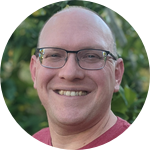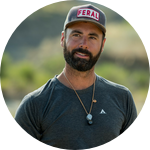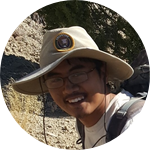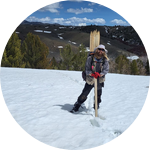Project Results
We discovered yet more important fossil sites and collected significant vertebrate, invertebrate, and plant remains. The results of the 2022 survey are found in a short paper called:
VERTEBRATE PALEOFAUNA OF THE CAMPANIAN ALMOND FORMATION OF WYOMING: HISTORY OF STUDY, BIOGEOGRAPHIC SIGNIFICANCE, AND EARLY RESULTS OF AN ONGOING PALEONTOLOGICAL SURVEY."
Link: https://anatomypubs.onlinelibr...
About This Project
The Late Cretaceous Almond Formation has been known to produce dinosaurs since 1937. Still, the fauna it preserves remains almost entirely unknown. In 2021 we found the first turtles, fish, and crocodylomorphs as well as several dinosaurs including hadrosaurids and the first ankylosaur from the formation. Our aim is return to the deposit and thoroughly document its ecosystem for the first time to inform future studies of dinosaur evolution and distribution.
Ask the Scientists
Join The DiscussionWhat is the context of this research?
~83-70 million years ago, during the Campanian stage of the Cretaceous period, North America is believed to have been ecologically extraordinary for its high levels of dinosaur diversity. Though fossils from this interval are well known in Montana, Utah, New Mexico, and Alberta, little is known from Wyoming at this time. The Almond and Rock Springs preserve rocks from this earlier interval. Previously, the only known Almond Formation dinosaurs were those found by the famous paleontologist Barnum Brown in 1937. He found parts of a huge hadrosaurid and a well preserved, though incomplete ceratopsid skull. In 2021 we discovered the first Almond dinosaurs since Brown. Further exploration of the area is needed to better understand and classify this mysterious ecosystem.
What is the significance of this project?
In the Late Cretaceous North America was invaded by a seaway which split the continent into western (Laramidia) and eastern (Appalachia) landmasses. It was in the jungles of Laramidia that generations of snaggle-toothed tyrannosaurs, horned ceratopsians, and snorting hadrosaurs lived, hunted, grazed, raised babies, and ultimately vanished. Paleontologists have long wondered how and why so many dinosaur species survived simultaneously on Laramidia, a landmass just a fraction of North America's present size. Located near what was once the middle of Laramidia, the Almond Formation may provide fossil clues about the evolution and distribution of one of the last dinosaur ecosystems.
What are the goals of the project?
Our goals are to continue exploring the outcrop for new sites and to begin excavating some of the promising sites found last year. These include sites bearing such wonders as a 4.5 foot long dinosaur femur, a partial skull and skeleton of a hadrosaurid, parts of an ankylosaur, and much more. We will start this expedition on May 27 and remain until June 16. Ultimately, once the fossils are collected and cleaned we can begin studying and classifying them. From there we will publish our results in scientific journals where we will describe our specimens and discuss their relevance to dinosaur science.
Budget
Fieldwork consists of manual labor and long, hot hikes through difficult terrain. We must sustain this effort with quality food for the 3 weeks. Supplies such as plaster, burlap, and glue are required to retrieve bones. Hand tools such as chisels, hammers, pickaxes are needed. We need canopies, coolers, and camp amenities. We have to drive to Wyoming and get around each day in the field. A 1,500 mile drive to take the fossils to Ohio requires funds for lodging, fuel, and food. If we exceed our goal we can afford more food and supplies to work more efficiently. If we double our goal we will post daily lab notes from the field to describe our finds. Donors sending $200 or more will be thanked by name in every presentation and journal article published hereafter.
Endorsed by
 Project Timeline
Project Timeline
We will be in the field from May 27-June 16 (2022). Afterwards the fossils will be driven to their repository where we will clean and study them.
May 21, 2022
Project Launched
May 27, 2022
Expedition begins: Drive to field site, set up camp, begin planning and delegating tasks.
Jun 05, 2022
Halfway point of expedition.
Jun 16, 2022
Drive to deliver specimens to museum begins. Once at the museum the fossils will be thoroughly prepared (cleaned) and studied by our team.
Jun 20, 2022
Fossils arrive at museum. Preparation process begins.
Meet the Team
Team Bio
We are a team of young geologists and paleontologists with a love for fieldwork and research.
Ethan Warner-Cowgill
I am a paleontology student studying Jurassic and Cretaceous dinosaurs and crocodylomorphs. I have conducted paleontological fieldwork across the American West from Montana to Texas and everywhere in between. I study paleontology not just because I like to make discoveries and live in the wilderness but also because it has the potential to solve grand puzzles about evolution, climate change, and extinction.
Tut Tran
I am beginning the second season of a new paleontological inventory at Bryce Canyon National Park. I earned my Master's of Science at California State University, Fullerton in 2022 and have previously worked on several dinosaur projects in the western United States, including field expeditions to Grand Staircase-Escalante and collections management at Dinosaur National Monument.
Logan Ashurst-McGee
I am an Associate in Geology from Salt Lake Community College. I am currently a senior at the University of Utah and working as a Junior Geologist for a local mineral exploration firm. I have had an affinity for the outdoors from a young age and appreciate any and all opportunities to work in remote areas. In addition to paleontology, I have experience with soil and water sampling, core drilling, claim staking, biological studies, and mineral research. I greatly appreciate how the study of geology and paleontology has broadened my understanding of the world around me and the changes it has experienced, and I look forward to expanding my knowledge and expertise in these fields.
Project Backers
- 17Backers
- 221%Funded
- $4,776Total Donations
- $280.94Average Donation





